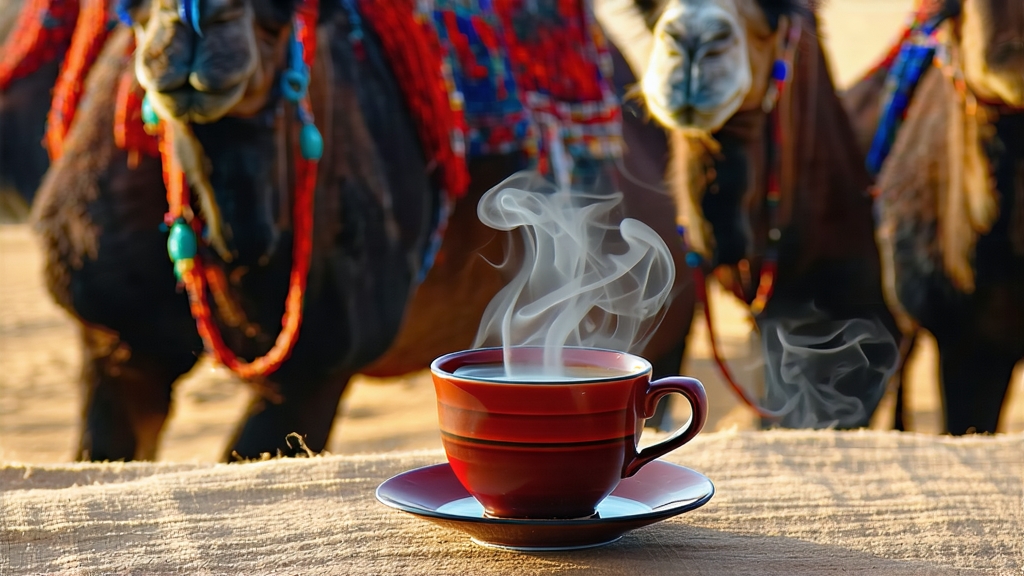
Few beverages can claim to have been both currency and medicine, yet Fu brick tea—pronounced “foo” and sometimes written Fuzhuan—carried both roles for more than a thousand years as it traveled westward from the humid mountains of Hunan province. Today this dark, mellow tea is enjoying a renaissance among sommeliers who prize its cocoa-like sweetness, camphor nose, and the dazzling constellation of tiny golden fungi visible on the broken faces of every brick. To understand why Fu brick is considered the most romantic of China’s dark teas, one must begin on the hoof-beaten tracks of the Silk Road.
Historical footprints
Tang-dynasty records (618-907 CE) already mention “Hunan tight tea” bartered for Tibetan warhorses. By the early Ming (14th c.), court law decreed that only state-licensed factories could compress tea into standardized bricks for frontier trade; any private caravan caught smuggling loose leaf risked beheading. The 1368 statute unintentionally created the world’s first tea-origin system, centuries before Champagne or Parma ham. Caravans departing the city of Jishou carried bamboo-wrapped bricks northwest across the 3,000-meter Xuefeng range; frost, altitude, and months of yak-butter warmth inside leather saddlebags conspired to ferment the tea far beyond the green or semi-oxidized state with which it began. Upon arrival in Lhasa or Kashgar, the bricks had darkened, mellowed, and developed a faint golden bloom that traders called “golden flowers” (Eurotium cristatum). Buyers paid higher prices for the most heavily flowered pieces, establishing an early quality marker that still governs the market.
From horse path to laboratory
Modern science has decoded what the camel drivers intuited: Eurotium cristatum breaks down bitter catechins into soft theaflavins and releases gamma-aminobutyric acid (GABA), giving Fu brick its signature calm, sweet finish and low astringency. The bacterium also synthesizes a unique polysaccharide—nicknamed “FU6”—that Chinese pharmacologists are studying for lipid regulation. Far from being spoilage, the golden flowers are now a protected microbiological heritage, and factories compete to achieve a flower count above 500,000 per gram of dry tea, a density visible to the naked eye as a fine mustard-yellow dusting.
Raw material and terroir
Authentic Fu brick starts with a rough pluck from the humid foothills of the Nanling Mountains at 28° N latitude. The cultivar of choice is Yun-da #1, a large-leaf variety rich in polyphenols yet low in chlorophyll, allowing the leaves to turn a uniform dark olive after fixing. Spring picking is avoided; the summer flush of June and July provides thicker cell walls that withstand the upcoming 60-day fermentation without collapsing. After harvest, the leaves are withered on bamboo racks inside open-walled sheds where mountain mist keeps humidity above 75 %. The goal is not oxidation but enzymatic softening; leaf temperature is never allowed to exceed 32 °C so that green character is retained for the later fungal fermentation.
Pile-fermentation: the first metamorphosis
Once the leaves have lost 30 % of their moisture, they are pan-fired at 280 °C for ninety seconds—just long enough to denature polyphenol oxidase while preserving leaf elasticity. Next comes the defining “wet-pile” (wo-dui): leaves are sprayed with 28 °C well water, heaped 1.2 m high, and covered with hemp canvas. Internal temperature climbs to 55 °C within six hours; teams turn the pile every 24 h for 12–15 days, sprinkling additional water to maintain 35 % moisture. During this phase Bacillus subtilis and Aspergillus niger dominate, pre-digesting cellulose and creating the earthy “old library” aroma that will later provide substrate for Eurotium.
Pressing and flowering: the second metamorphosis
After piling, the leaf is steamed for 20 seconds to regain pliability, then blended with 2 % oak ash (a traditional alkaline buffer) and 0.5 % Yunnan golden tips for visual contrast. The mixture is scooped into cedar-lined molds 35 cm × 18 cm × 4 cm and compressed under 50 metric tons for six minutes—firm enough to bond, yet porous enough to allow oxygen diffusion. Bricks are then slid into a “flower room,” a two-story pine hut whose windows are sealed with steamed rice